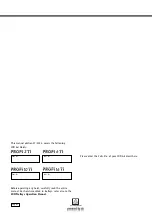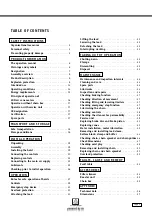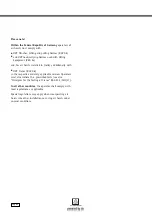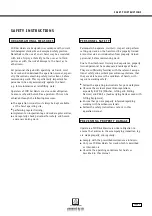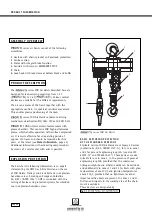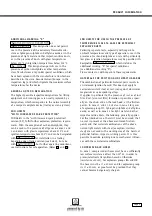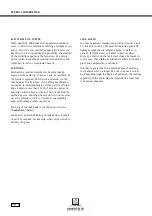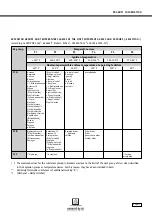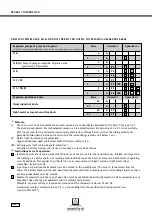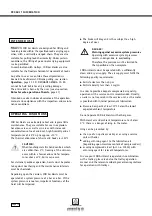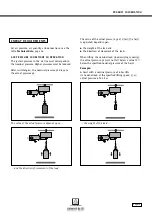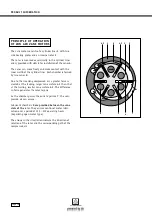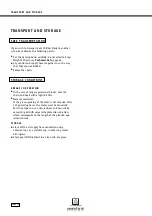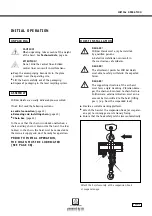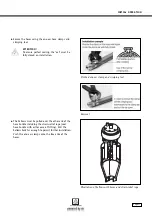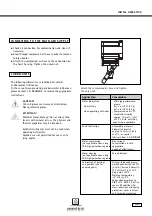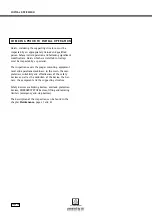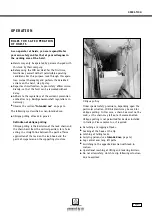
P RO D U C T I N F O R M AT I O N
Page 12
*1:
Features:
A:
The chain is made of zinc-plated steel; metal controls are conductively connected to the hoist. This is part of
the standard equipment. For technological reasons, a zinc-plated version of chain size 31.5 x 90 is not available.
This is only used for the extremely slow-running chain drives of large hoists, so that the sliding velocity for
potential friction points between the chain and the surroundings remains well below 1 m/s.
SP: Hoists "with increased spark protection":
Copper-plated load hook and bottom block with brass safety catch.
FSR: Running gear "with increased spark protection":
Running wheels for trolleys and cranes are bronzed or are made of bronze.
*2:
Instructions for safe operation:
: Ignition hazards are not to be expected if hoists or cranes are used in the normal manner. Friction and impacts in
the working area of the chain, not resulting from intended use of the hoist or crane and which result in sparking,
must be excluded. This applies in particular to use in conjunction with light metals or light metal alloys.
(exception: stainless steel)
: A gas-free or spark-free environment must be ensured in the working area. This means, for example, that the
chain, the bottom block and the load hook must be prevented from swinging against surrounding objects or that a
gas-free environment must be ensured.
: Ambient temperature and the type of operation must be examined separately. Equipment surface temperatures are
dependent upon the type of operation and the ambient temperature.
Therefore, separate testing is required for materials of the temperature classes T5 and T6.
A maximum ambient temperature of 40°C is a pre-condition for the specification of temperature class
(see also EN 50014
8
).
T
E
D
DECISION CRITERIA FOR SELECTING THE CORRECT JDN HOIS T S IN EXPLOSION-HAZARDOUS AREAS
Explosion groups of gases and vapours
Zone
Version*
1
Operation*
2
(cf. Explosion groups and temperature classes of the most important gasses and vapours)
II A
2
A
1
A
II B (X)
except hydrogen sulphide, ethylene oxide
2
A
(particularly flammable)
1
A
FS
II B
2
A
FS
1
A
FS
II C / T4
2
A
FS
1
A
FS
FSR
II C / T6(X)
2
A
FS
1
A
FS
FSR
Explosion-hazardous dusts
Zone
Version*
1
Operation
*2
Usual industrial dusts
22
A
21
A
Light-metal or impact-sensitive dusts
22
A
FS
21
A
FS
D
D
D
T
E
D
T
E
D
E
D
E
D
E
D
E
D
D
D


